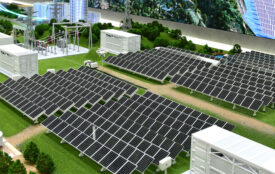All-Electric New Homes: A Win for the Climate and the Economy
Buildings are quickly becoming a cornerstone of ambitious climate policy, as policymakers recognize they can’t achieve the necessary science-based emissions reductions without tackling this stubborn sector. This means states and cities across the country won’t meet their climate goals if new buildings in their jurisdiction include fossil fuel systems that lock in carbon emissions over the 50 to 100-year building lifetime.
The cost of such an ambitious transition is often the first consideration. Thus, to help inform these crucial decisions, Rocky Mountain Institute updated and expanded our 2018 analysis, The Economics of Electrifying Buildings. We examined the economics and carbon emissions impacts of electrifying residential space and water heating, now with seven new cities and additional methodology changes. Today, we are releasing the first set of our findings examining newly constructed single-family homes.
In every city we analyzed, a new all-electric, single-family home is less expensive than a new mixed-fuel home that relies on gas for cooking, space heating, and water heating. Net present cost savings over the 15-year period of study are as high as $6,800 in New York City, where the all-electric home also results in 81 percent lower carbon emissions over the mixed-fuel home.
Key Findings
The new all-electric, single-family home has a lower net present cost than the new mixed-fuel home in every city we studied: Austin, TX; Boston, MA; Columbus, OH; Denver, CO; Minneapolis, MN; New York City, NY; and Seattle, WA.
- In most cities, the mixed-fuel home (with gas furnace, water heater, air conditioning, and new gas connection costs) has a higher up-front cost than the all-electric home, which uses a heat pump system for both heating and cooling. This is true in Austin, Boston, Columbus, Denver, New York, and Seattle. The Minneapolis climate requires a higher capacity heat pump than other cities in the study. This comes at a higher cost, outweighing the equipment and labor cost savings seen with heat pump systems in milder climates.
- There are significant energy savings with the heat pump space and water heater over corresponding gas appliances, resulting in a lower annual utility cost for the all-electric home in most cities—up to 9 percent lower in Minneapolis. The two modeled scenarios have nearly equivalent utility bills in Boston and Seattle.
- The all-electric home results in substantial carbon emissions savings over the mixed-fuel home in all cities. The greatest savings are found in Seattle (93 percent) and New York City (81 percent). Minneapolis, Columbus, Boston, and Austin all save more than 50 percent over the lifetime of the equipment compared with the mixed-fuel home.
Context and Methodology
Cities in California, Washington, New York, and Massachusetts have all passed laws or adopted codes mandating or encouraging all-electric new building construction. Regional coalitions across the country are forming to extend lessons learned from these first movers to other states, including in New England and the Midwest.
Thus, we extended our Economics of Electrifying Buildings research to assess the economic case for electrification in a variety of climate zones. Several of these states are actively considering new policies or incentives to spur the transition to all-electric buildings.
In partnership with Group 14, we have updated our methodology from the 2018 report to be more readily replicable in support of building decarbonization policy decisions across the United States, incorporating the following:
- A thorough energy use calibration for each scenario to end-use breakdown, energy use intensity, and gas/electricity fuel split with the latest available Energy Information Administration Residential Energy Consumption Survey data by climate region
- A 15-year greenhouse gas emissions comparison that incorporates data from both the US EPA and NREL’s Regional Energy Deployment System model to project changes in carbon intensity for electricity consumed in each state through 2036
- RSMeans construction costing factors to account for location-specific variability in up-front cost
- Building industry performance standards from ASHRAE for HVAC systems, EnergyStar for household appliances, and WaterSense for potable water fixtures








